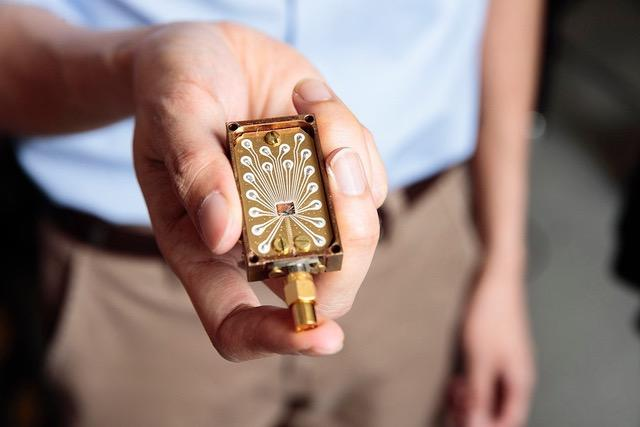
Image Credit: UNSW
The advancement and widespread adoption of quantum computing hinges on the ability to overcome its current limitations, one of the most major of these being the issue of stability. A team of quantum engineers at the University of New South Wales (UNSW), Sydney, has potentially created a solution to address this limitation.
In a paper published this month in the journal Nature Communications, the team describes how they developed artificial atoms in silicon quantum dots, an innovation that may provide the necessary improved stability for quantum computing.
Overcoming Instability Issues to Advance Quantum Computing
Quantum computing is rapidly gaining attention, not only in the fields of hard science but also in the public arena. People are becoming increasingly interested in the technology that is being hailed as the future of computing that will be used to help us solve problems in all industries, achieving complex computations that lie far outside of the capabilities of classical computers.
The technology had been in theoretical stages for a number of years when in 2019 Google’s scientists announced that in a world-first, it had created a quantum computer that had successfully completed a task that would be impossible for a classical computer to complete.
It is evident that the technology is already reaching the stage where it is beginning to be able to accomplish the impressive tasks that theory has predicted. However, before we can be confident that quantum computing will evoke a profound shift in the technologies and capabilities of future innovations, several major obstacles must be overcome.
One major hindrance being the issue that only a minimal level of environmental interference is needed to impact the quantum state, therefore affecting the computer’s ability to retain information. Scientists need to develop a way of vastly improving the stability of quantum machines while also providing an effective method of controlling electrons in order to secure the future of useable quantum computers.
The team at UNSW set up to accomplish this by developing a system that uses artificial atoms to offer this enhanced stability.
Establishing an Electrostatically Confined Quantum Dot
In quantum computing, qubits take the place of the bits used in classical computing. Bits store information in binary, as 0s or 1s, whereas qubits can store information as 0s, or 1s, or both. This is where the expansion of computing possibilities lies. The team at UNSW established a method of creating artificial atoms in silicon ‘quantum dots’, where the dot’s electrons are used as qubits, offering enhanced stability.
In revealing the periodic properties of elements, scientists can define the chemical behavior in terms of the valence of atoms. The Australian quantum engineers recognized that this could be extended to quantum dots, to the result of performing quantum computation by managing the outer-shell electrons of dot-based qubits.
Unfortunately, previous methods of devising quantum computers had relied on semiconductor materials that had presented imperfections that had prevented the systematic many-electron arrangement. However, the team at UNSW was able to establish an electrostatically confined quantum dot with a defined shell structure.
The team were able to demonstrate that it is not necessary to operate quantum dot qubits at single-electron occupancy, the research showed that robust spin qubits can be generated in multielectron quantum dots up to the third valence shell at least, which vastly improves the stability of the qubits, as well as the reliability and performance of the quantum computers built from these multi-electron qubits.
These new artificial atom qubits overcome the limitation of instability in quantum computing and will likely open the door to the widespread adoption of the technology in various applications. They will help enable the establishment of quantum computing in the various uses that up until this point have remained theoretical.
Disclaimer: The views expressed here are those of the author expressed in their private capacity and do not necessarily represent the views of AZoM.com Limited T/A AZoNetwork the owner and operator of this website. This disclaimer forms part of the Terms and conditions of use of this website.